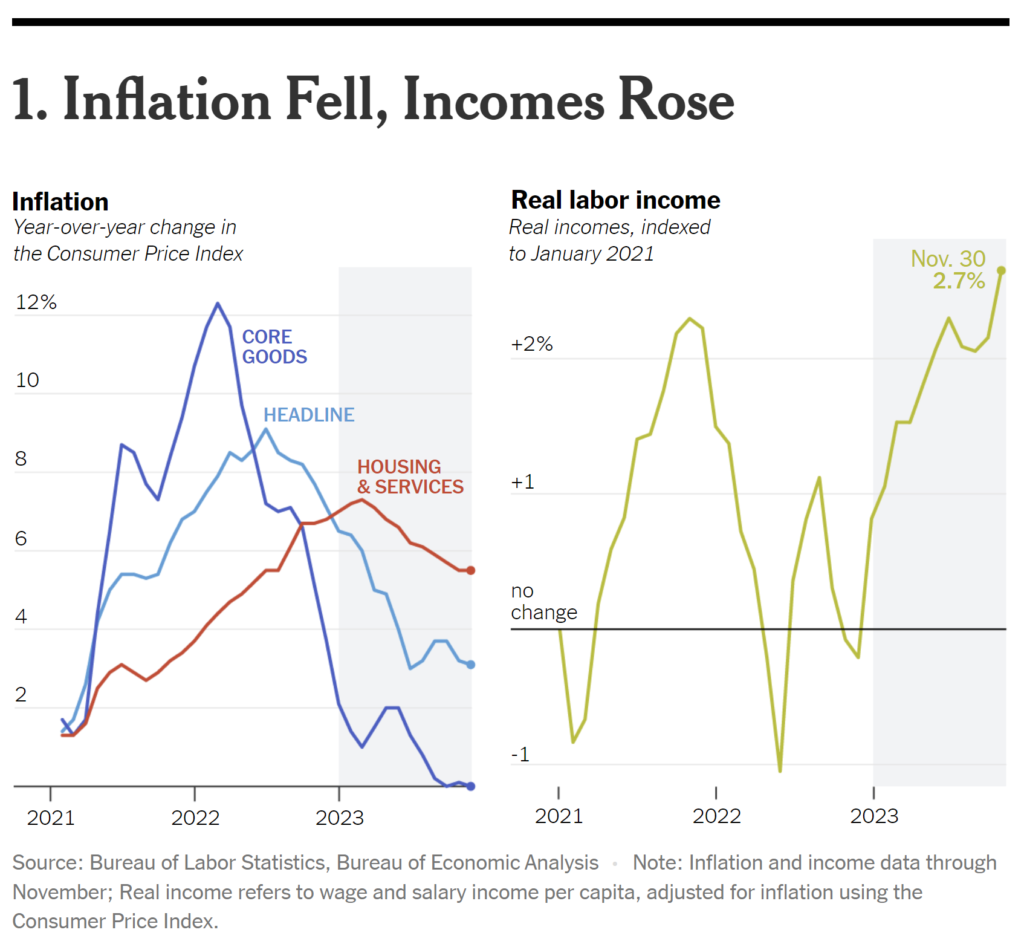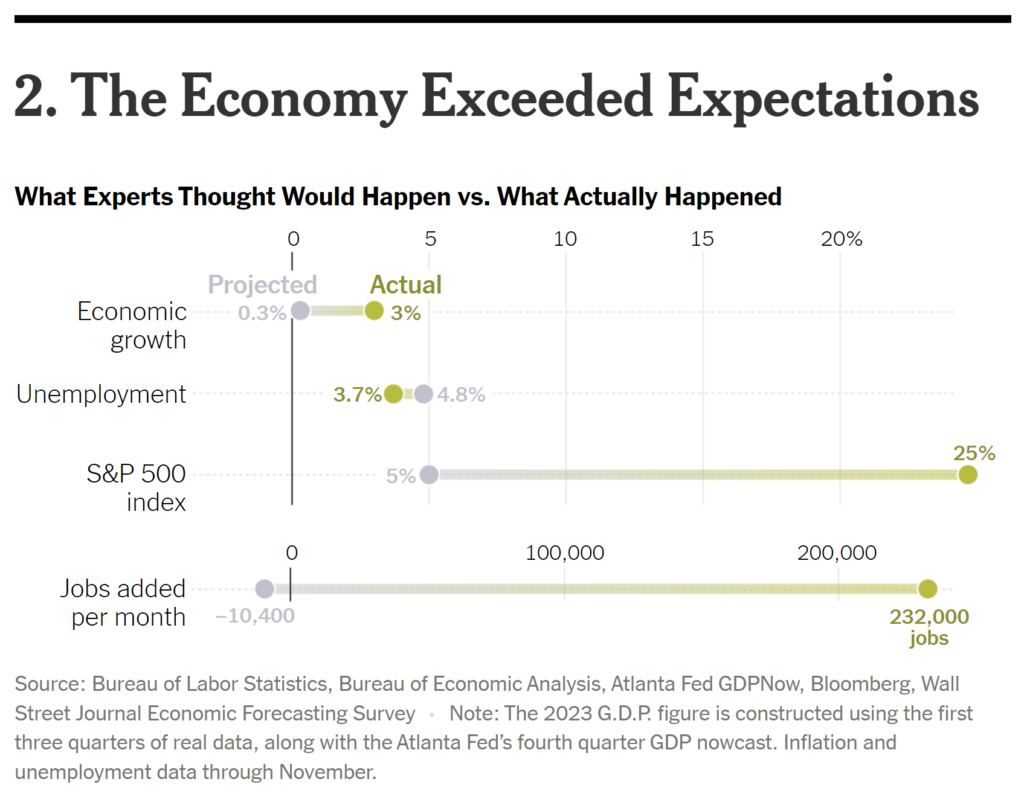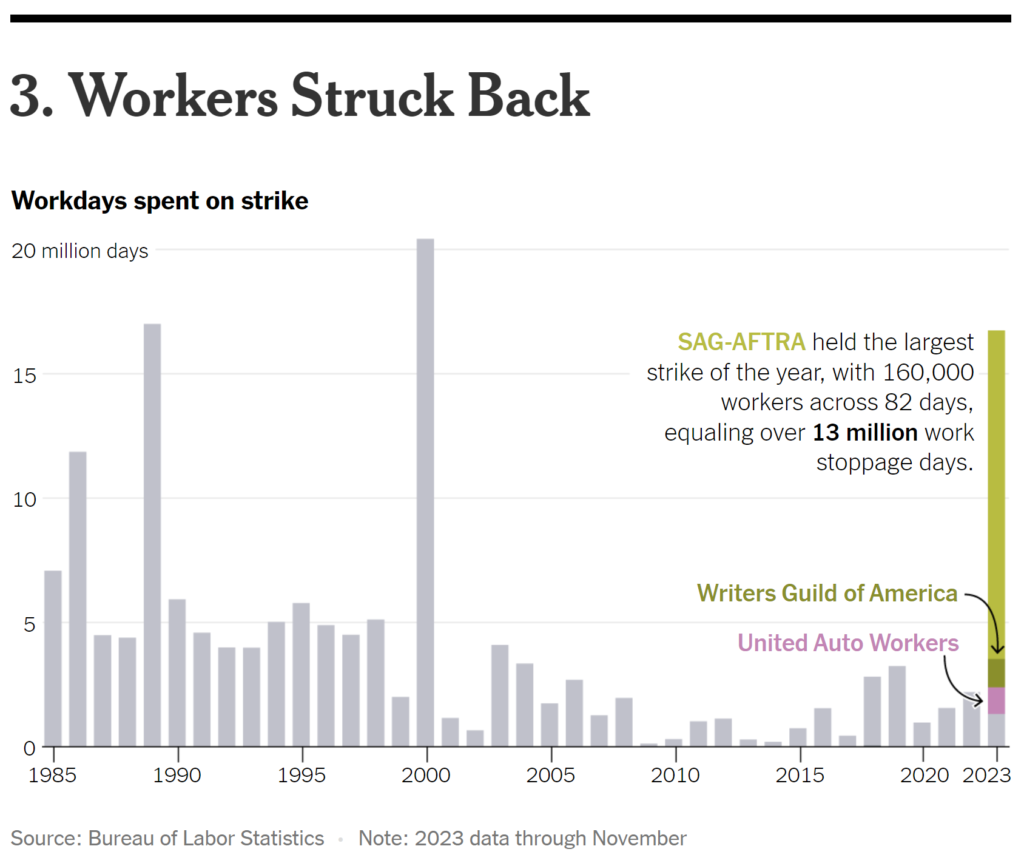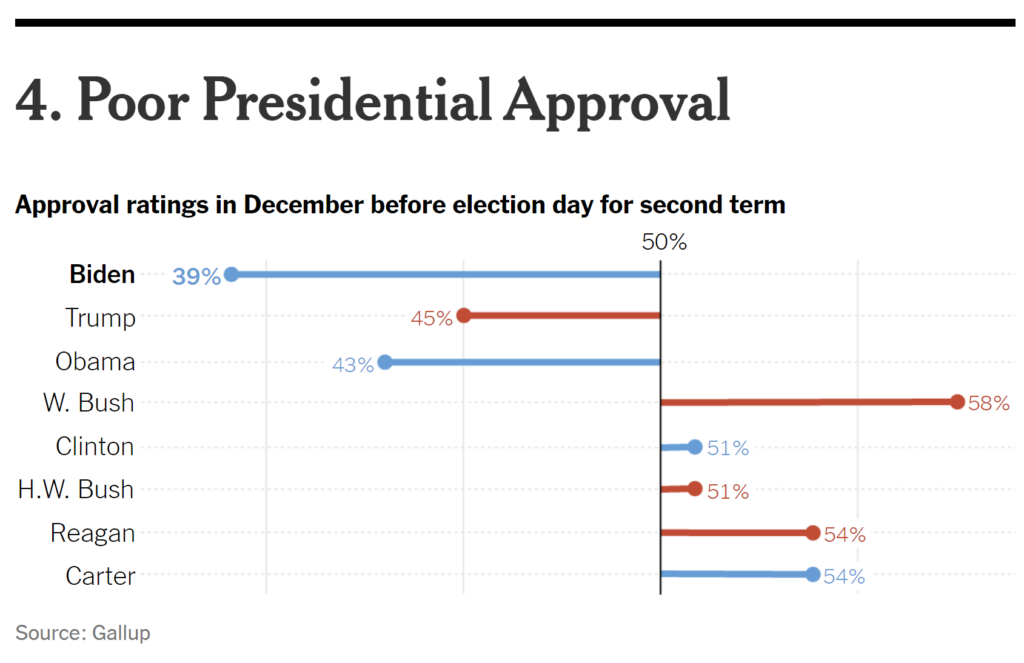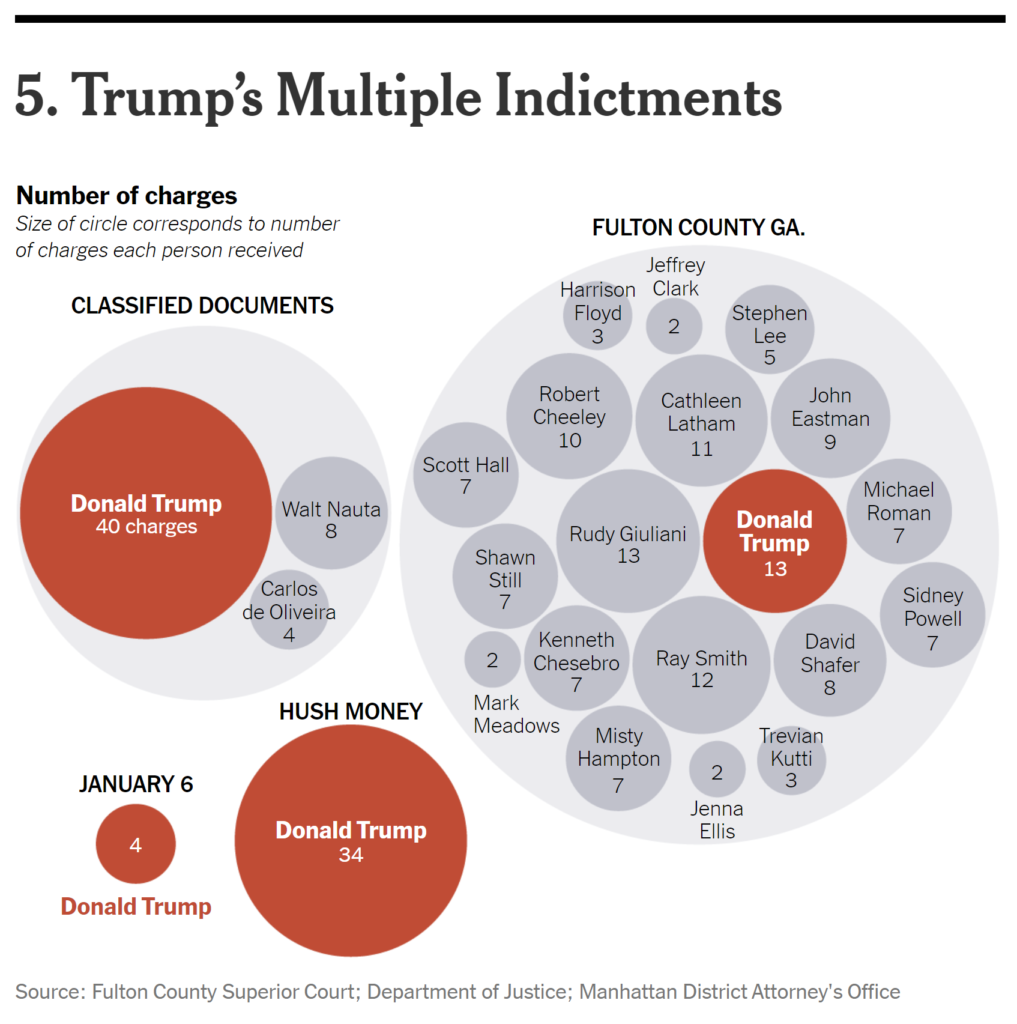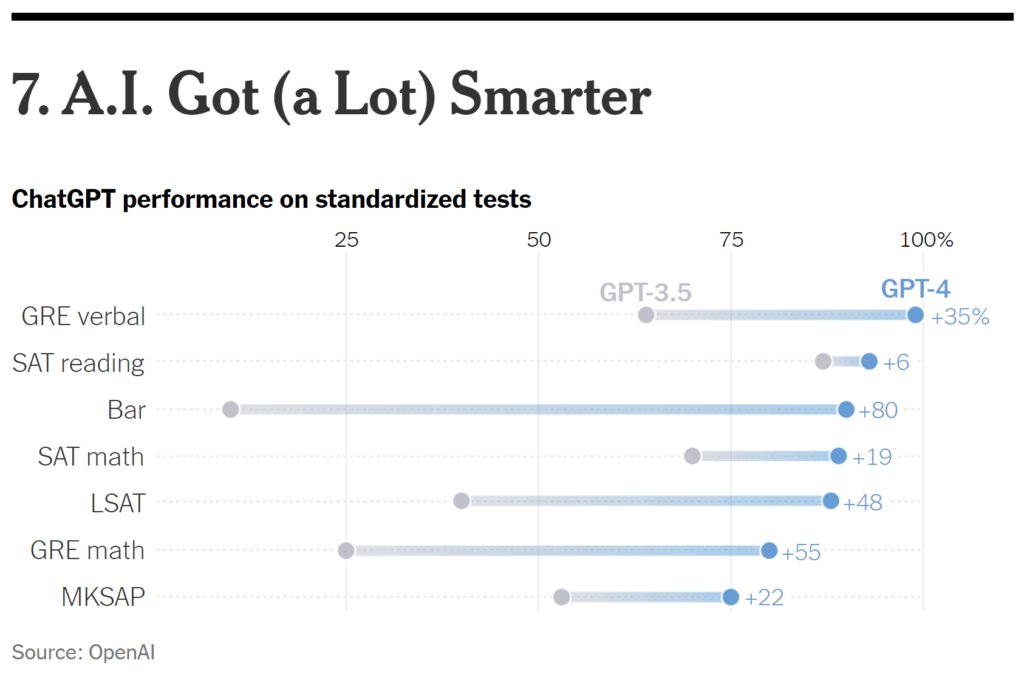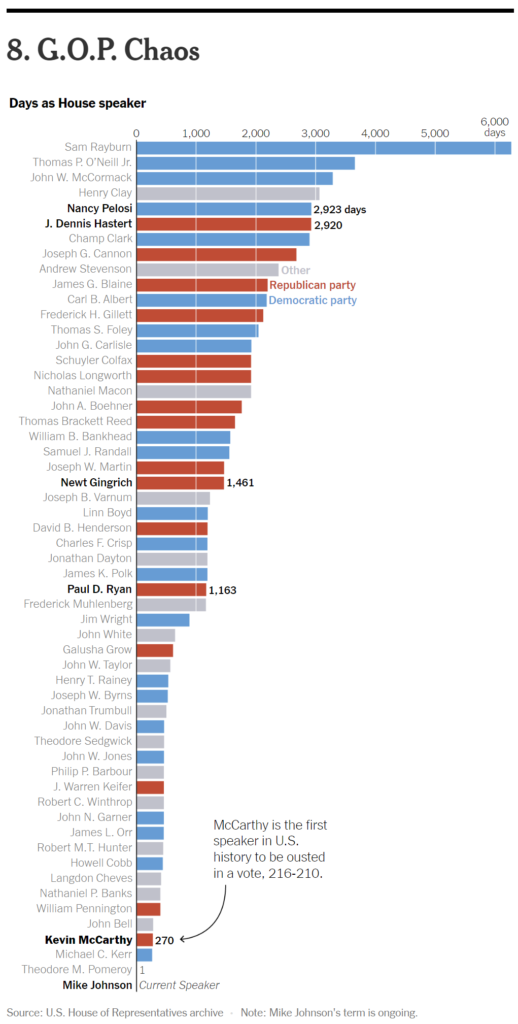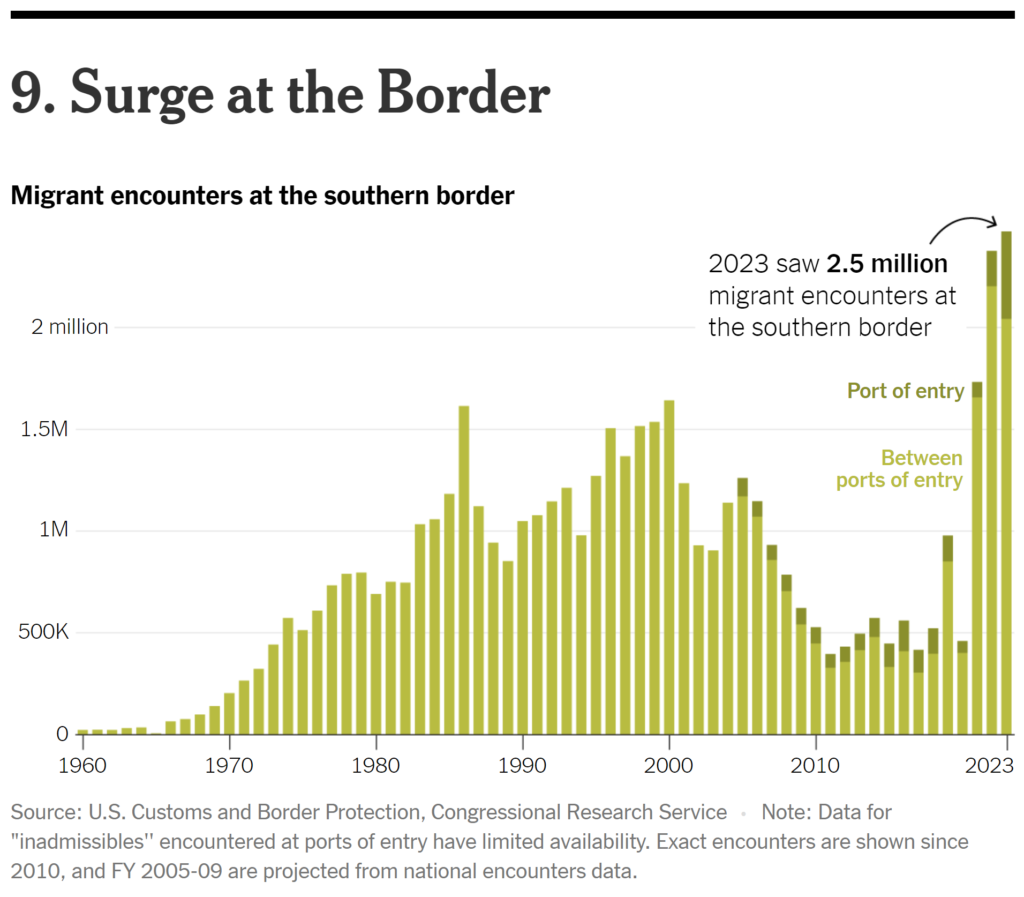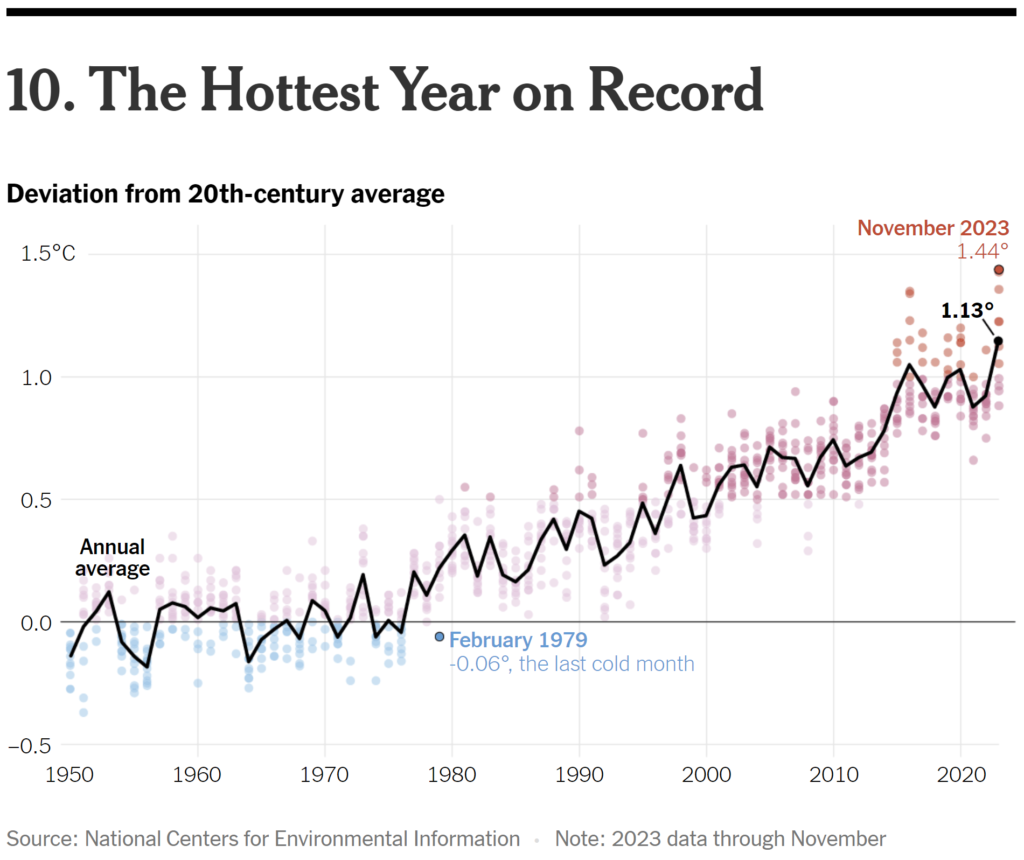Some years are defined by a single event or person — a pandemic, a recession, an insurrection — while others are buffeted by a series of disparate forces. Such was 2023. The economy and inflation remained front of mind until the war in Gaza grabbed headlines and the world’s attention — all while Donald Trump’s candidacy loomed in the background.
Americans still fretted about rising prices, even as inflation subsided significantly. In fact, the prices of some goods actually fell. Gasoline dropped to an average of $3.12 a gallon from a high of $5.02 a gallon in June 2022.
This was not enough to soothe most Americans, many of whom believed their purchasing power was still eroding. Few appreciated that their inflation-adjusted (“real”) incomes rose in 2023 as inflation fell close to the Federal Reserve’s target of 2 percent.
By November, real incomes were 2.7 percent above their January 2021 levels. Moreover, inequality narrowed as those at the bottom saw their wages rise faster than those at the top.
Nor were Americans moved by the surprising plethora of positive economic news.
The economy was projected to lose 10,400 jobs a month. Instead, it gained an average of 232,000 a month.
The unemployment rate, which started 2023 at a five-decade low, was projected to rise to nearly 5 percent by the end of the year. Instead it ticked up only trivially, to 3.7 percent.
More than 80 percent of economists predicted that 2023 would end in a recession. Instead, the economy is likely to have expanded by a remarkable 3 percent.
On top of that, the stock market boomed. In 2023, the S&P 500 index rose to near record highs, powered primarily by the technology stocks known on Wall Street as the magnificent seven — Apple, Amazon, Alphabet, NVIDIA, Meta, Microsoft and Tesla.
The combination of the robust American jobs machine and rising prices led workers to demand better pay to an extent not seen in more than two decades.
From actors to hotel employees and auto workers, Americans took to the picket lines. Through November, workers spent almost 17 million days on strike, more than from 2009 to 2022 combined.
While the disputes were mostly about pay, other concerns bubbled up, principally around potential job losses from technological advances. Autoworkers took issue with the possible impact of electric vehicles. Screenwriters and actors were concerned about artificial intelligence (along with the loss of royalty payments as viewers increasingly turn to streaming services).
Usually a strong economy buoys an incumbent president. Not this year.
President Biden’s approval rating, which peaked at 55 percent early in his term, ended the year at just 39 percent, the lowest of any modern incumbent at this point in his tenure. Just 22 percent of Americans believed the country was on the right track; only 17 percent feel they are better off than before Mr. Biden became president.
Even Jimmy Carter, bedeviled by high interest rates, slowing economic growth and inflation, was more popular at this point in his term. Why? Two of many complex reasons stand out to me. First, for two-thirds of voting-age Americans, the current inflation is the highest of their adult lifetimes. And second, two decades of subpar income growth has threatened the notion that each successive generation will live better than the previous one.
Of course, Mr. Trump remained a dominant political figure, despite his indictments on 91 counts. Indeed, to paraphrase Nietzsche, that which didn’t kill him only seemed to make him stronger.
His dominance of the field of Republican presidential aspirants increased to 61 percent in the most recent polls, up from 45 percent at the beginning of the year. And each round of indictments brought a surge of fund-raising receipts.
For example, Mr. Trump raised a stunning $13 million in the seven days after his New York indictment, and a stunning $4.2 million following the release of his Fulton County mug shot.
Economics and politics notwithstanding, the most significant event of the year was the war in the Middle East, which after just three months may be the deadliest Arab-Israeli conflict since 1948.
Israelis and non-Israelis alike found staggering the ability of Hamas to launch such a sophisticated surprise attack and the brutality that ensued. Israeli civilians were tortured, raped and murdered. Thousands of Palestinians — more than two-thirds of them women and children — have since been killed in Gaza by Israel’s retaliatory air strikes.
Public opinion in America, squarely on the Israeli side at the outset, began to shift, particularly among the young. By November, a majority of voters between the ages of 18 and 34 felt more sympathy for Palestinians, up from 26 percent in October, according to polling from Quinnipiac University.
Following the debut of OpenAI’s ChatGPT late last year, 2023 was the year artificial intelligence — its novelty, danger and revolutionary promise alike — went mainstream.
As the superpowered A.I. made its way into classrooms and offices, a flotilla of concerns quickly emerged, ranging from job losses to accidental nuclear war. That noted, I believe A.I. has the potential to accelerate our flagging productivity growth (much as computers did), raising the prospect of accelerating lagging income growth for workers.
One study found that workers equipped with ChatGPT became 37 percent faster at basic writing and research tasks. The A.I. revolution showed no sign of slowing, either. The first version of GPT, developed in 2018, had 117 million parameters; 2020’s GPT-3 had 175 billion. GPT-4, released this year, has a trillion, according to a report by Semafor.
Congress set a new low bar for itself.
In the House of Representatives, Kevin McCarthy fought through 15 ballots — the most since the years before the Civil War — to become speaker. And then he lasted just 270 days in the role, as a faction of far-right Republicans battled with more moderate party members.
That contributed to Congress notching its most unproductive year in modern history, with just 27 bills clearing both chambers and the White House. In comparison, the previous Congress passed more than 70 bills in its first year, and the Truman-era “Do Nothing” Congress approved almost 400 bills in its first few months.
By the end of the year, Congress had passed none of its 12 appropriation measures and had failed to act on an urgent need for aid in Ukraine and Israel and to address the mounting border crisis.
The flood of migrants seeking to cross our southern border surged to record levels, creating a political crisis for Mr. Biden.
Misinformation added to the commotion. The 2.5 million “encounters” in fiscal year 2023 cited in press reports represented the number of migrants who were apprehended by U.S. Customs and Border Protection.
Roughly one million of those apprehended were released inside the U.S. to await hearings in our underfunded and backlogged immigration courts, creating a major challenge for New York and other cities to which many traveled. Beyond the 2.5 million encounters, a (relatively) modest 600,000 more were believed to have sneaked into the country without being caught.
Of the 1.4 million new court cases added in fiscal year 2023, just 100,000 have been resolved.
As if we needed another reminder of the climate crisis, global temperatures notched another record high in 2023. Bizarre weather events, from flooding in California to hailstorms in Texas, led to a record number of billion-dollar disaster claims in the United States.
Further afield, Antarctic sea ice hit a record low. Passage of the biggest climate package ever in 2022 spurred a surge in construction of renewable energy facilities this year. But emissions continued to rise globally, largely from faster-growing developing countries, particularly China and India.

